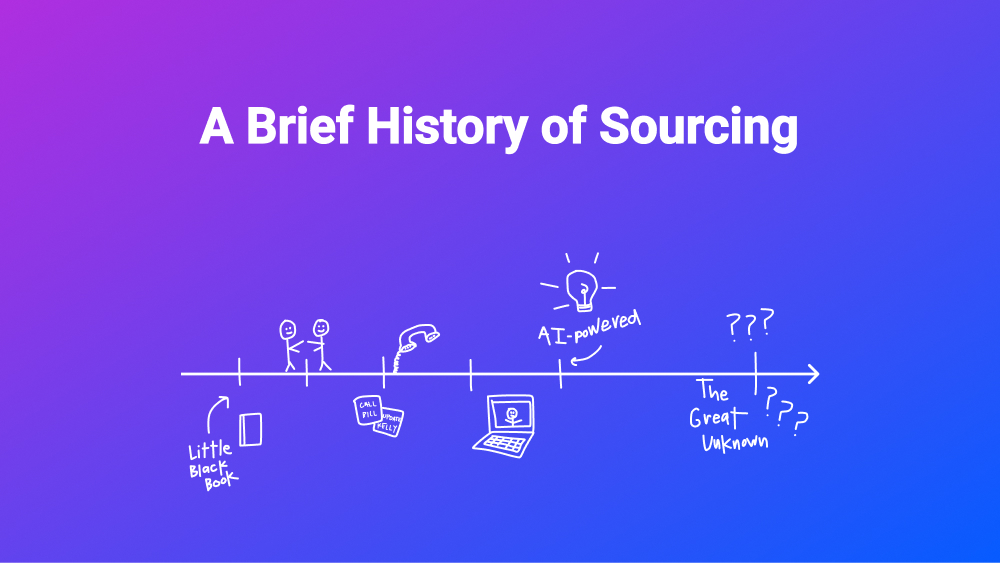Recruitment Challenges in Today’s Labor Market: Insights from Mallory Vachon — GUEST POST

Note: This article was written by Mallory Vachon, Chief Economist at LaborIQ
Recently, I had the pleasure of discussing the complicated dynamics of today’s labor market with Sam, VP of Marketing at Loxo. As the Chief Economist at LaborIQ, a compensation data platform used by thousands of HR and recruiting leaders, I see a lot of big changes coming in the market that could have a major impact on talent acquisition. Over the past year or so, the sentiment from recruiters hasn’t matched the headlines. Recruiters have been on the front lines of a cooling labor market, facing fewer job openings, lower budgets, and even layoffs all while the headline numbers have pointed to a strong labor market that’s consistently beating expectations. And while the job report numbers, unemployment rate, and wage growth are all important statistics to watch, there is more happening that will have profound market impacts over the next 5-10 years.
Today, I want to recap what Sam and I discussed in an episode of Becoming a Hiring Machine. We talked about the challenges posed by an aging workforce and their implications for business succession, internal hiring, and promotion strategies.
How Hiring Slowdowns Are Reshaping Recruitment
For months, it’s been difficult to reconcile the challenges I've been hearing from recruiting leaders with the headline numbers in the jobs report. These two are finally coming into balance. The cooling labor market, felt in HR and recruiting for a year or more, is now evident in the data. The labor market is slowly cooling, but that may be felt more deeply depending on your industry or location. While hiring totals have been fairly robust overall, in June just three sectors – Government, Healthcare, and Social Assistance – accounted for nearly 75% of new jobs added. Private-sector hiring has slowed considerably.
And Management of companies, which includes many HR and leadership position, has shrunk since 2021 following a hiring spree, and even over-hiring, by many companies. The unemployment rate increased to 4.1% in June and has risen gradually from 3.7% in January.
Even though layoffs haven’t increased, a slowdown in hiring is causing unemployment to edge up. The unemployment rate is relatively low by historical standards, but it's the first we've seen unemployment above 4% since November 2021. Recruiters face dual challenges given the challenges in today’s labor market.
When hiring slows, recruiting and staffing agencies see their business shrink. There are also more active candidates in the market today, but a slowdown in hiring means a longer time to fill open roles. As if recruiters didn’t need another challenge – unemployment rates for many jobs in management, business, finance, legal, or healthcare practitioners are still well below national average. The labor market is cooling, but there’s still a shortage of available talent for many roles.
Dealing with an Aging Workforce and Talent Gaps
We’ve discussed the challenges faced by recruiters in today’s market, but what are the challenges on the horizon?
Here is a statistic that will make your jaw drop:
From 2000 to 2020, the population aged 65 and older grew by approximately 21 million people. But the under-18 population increased by only around 800,000.
As the older generation leaves the workforce, business challenges will grow, particularly in succession planning and leadership development. The retirement of baby boomers means that a wealth of experience and institutional knowledge is leaving the workforce, creating a leadership vacuum that needs to be addressed strategically.
Given the changes in these demographics, succession planning should be a major focus for U.S. businesses. But in a changing, increasingly competitive labor market, succession planning is also a talent retention strategy.
The talent pool will likely look different in 2030 than it did in 2005 – candidates may be younger, have less formal education, or have fewer years of experience.
Many young workers will have to step into leadership roles sooner than their predecessors, and this will likely push businesses in ways that are hard to anticipate. It will require a proactive approach to talent management. Mentorship programs, leadership training, and rotational assignments will be critical tools in preparing the next generation of leaders.
If companies choose to do so, promoting from within not only boosts morale but also demonstrates a clear career path for employees. But it will be difficult to promote talent that you’re not able to retain. Of course, this approach requires talent development to ensure that employees are prepared to take on more senior roles.
Strategic Succession Planning in Talent Acquisition
Right now, especially if you’re a talent acquisition leader, it’s easy to look around and feel defeated. There are real challenges in today’s labor market, and hiring has slowed.
However, in times like this, there are real opportunities for HR and talent acquisition leaders to expand upon the value they bring to organizations. While hiring has slowed for many businesses, you’re likely still backfilling open roles and competing for talent in what is still a very tight labor market. Compensation, succession planning, and the opportunity for upward mobility will play an important role in how quickly and effectively your team is able to attract and retain talent. The goal is to create a resilient and adaptable organization that can thrive despite the demographic and economic headwinds.
If you’d like more market insights, make sure to subscribe to LaborIQ's Labor Market reports and market trends. We regularly share data-driven analyses and practical advice to help HR and recruiting leaders navigate the ever-changing labor market.
If you want to listen to my guest appearance on an episode of Becoming a Hiring Machine, you can check that out here: Episode 113: The Current State of Labor and Compensation.
Become a hiring machine
Ready to see for yourself how Loxo can transform your recruitment workflow and make you more efficient than ever before? We thought you might be.



